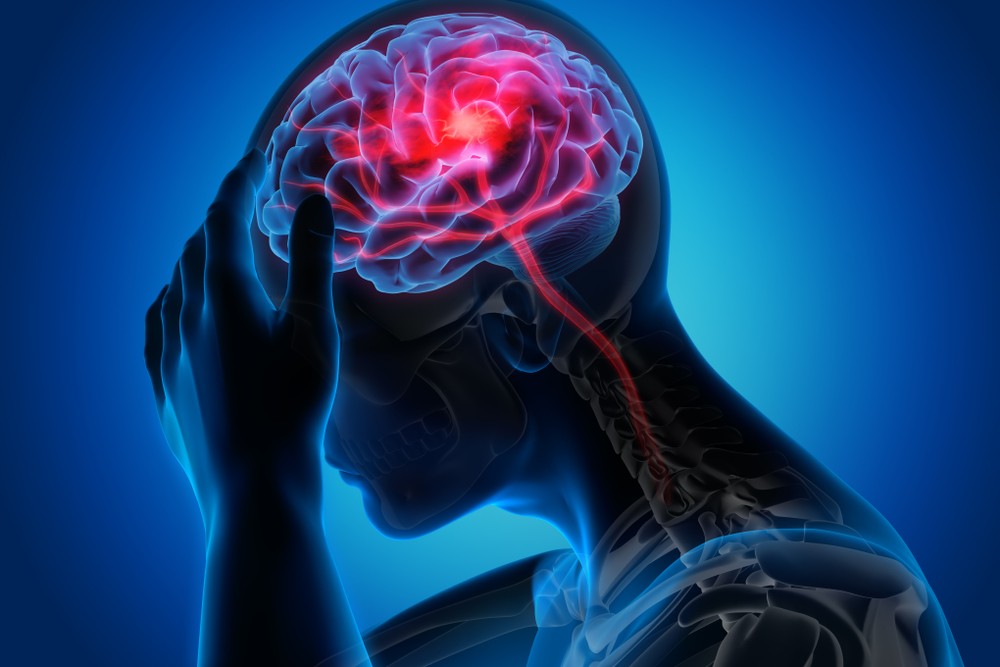 A recent study by the National Institute of Health (NIH) has revealed that patients who suffer from debilitating migraine headaches may be at an increased risk for developing another painful condition: temporomandibular joint disorder, or TMJD for short. Temporomandibular joint disorder is a condition of the temporomandibular joint, which connects the jaw to the rest of the skull. The disorder occurs when the temporomandibular joint becomes out of alignment, causing everything from pain and soreness of the jaw to tinnitus; teeth grinding (also known as bruxism); head, neck and back aches; and the inability to open and close the mouth and jaw.
A recent study by the National Institute of Health (NIH) has revealed that patients who suffer from debilitating migraine headaches may be at an increased risk for developing another painful condition: temporomandibular joint disorder, or TMJD for short. Temporomandibular joint disorder is a condition of the temporomandibular joint, which connects the jaw to the rest of the skull. The disorder occurs when the temporomandibular joint becomes out of alignment, causing everything from pain and soreness of the jaw to tinnitus; teeth grinding (also known as bruxism); head, neck and back aches; and the inability to open and close the mouth and jaw.
According to Bellmore, New York, neuromuscular dentistry specialist Dr. Gary Lederman, an estimated 15 percent of the population suffers from temporomandibular joint disorder - and some of those people could also be suffering from migraine headaches.



 If you’re like most people, you feel a lot better after getting a good night’s sleep. But for some people, staying up late and getting up early is just a way of life. Unfortunately, according to a new study from Seoul National University Boramae Medical Center in Seoul, South Korea, sleeping less than five hours (or more than nine hours) could be detrimental to your health.
If you’re like most people, you feel a lot better after getting a good night’s sleep. But for some people, staying up late and getting up early is just a way of life. Unfortunately, according to a new study from Seoul National University Boramae Medical Center in Seoul, South Korea, sleeping less than five hours (or more than nine hours) could be detrimental to your health. When it comes to sleeping, there’s a lot of misinformation about what’s healthy and what’s not. But unfortunately, what you don’t know really can hurt you. Check out these three sleep-related myths and the real science behind them.
When it comes to sleeping, there’s a lot of misinformation about what’s healthy and what’s not. But unfortunately, what you don’t know really can hurt you. Check out these three sleep-related myths and the real science behind them. A recent article in the news magazine Philly Voice shed light on a subject that may come as very little surprise to many of Dr. Lederman’s patients. Temporomandibular joint disorder, or TMJ disorder, is becoming increasingly common - especially among a certain subset of the population.
A recent article in the news magazine Philly Voice shed light on a subject that may come as very little surprise to many of Dr. Lederman’s patients. Temporomandibular joint disorder, or TMJ disorder, is becoming increasingly common - especially among a certain subset of the population. Has your temporomandibular joint disorder ever hurt so badly that you just wished you could throw out your old temporomandibular joint and get a whole new one? Well, the good news is that in the future you may be able to do just that. For now, however, that procedure is reserved for very rare cases, such as the recent case of a man in Cyprus who received a new temporomandibular joint following cancer treatment.
Has your temporomandibular joint disorder ever hurt so badly that you just wished you could throw out your old temporomandibular joint and get a whole new one? Well, the good news is that in the future you may be able to do just that. For now, however, that procedure is reserved for very rare cases, such as the recent case of a man in Cyprus who received a new temporomandibular joint following cancer treatment. You’ve probably heard of - and seen - an overbite before. But a lesser-known bite problem that occurs in only about 10 percent of the population is an underbite. An underbite is what happens when the lower jaw protrudes past the upper jaw. Not only is this type of misaligned bite more noticeable, but it can also unfortunately subject children to bullying and low self-esteem, among many other issues.
You’ve probably heard of - and seen - an overbite before. But a lesser-known bite problem that occurs in only about 10 percent of the population is an underbite. An underbite is what happens when the lower jaw protrudes past the upper jaw. Not only is this type of misaligned bite more noticeable, but it can also unfortunately subject children to bullying and low self-esteem, among many other issues. If you’re one of the 10 million Americans suffering from temporomandibular joint disorder, or TMD for short, you’re probably already aware of the many different types of pain TMD causes. In addition to the jaw pain that is synonymous with TMD (after all, the temporomandibular joint is in the jaw), you may experience pain in other areas of the head and body. But for the millions of estimated undiagnosed TMD patients, their pain may not be an obvious clue. That’s because as TMD sufferers are probably already aware, every case of TMD is different, and the pain isn’t always in the jaw.
If you’re one of the 10 million Americans suffering from temporomandibular joint disorder, or TMD for short, you’re probably already aware of the many different types of pain TMD causes. In addition to the jaw pain that is synonymous with TMD (after all, the temporomandibular joint is in the jaw), you may experience pain in other areas of the head and body. But for the millions of estimated undiagnosed TMD patients, their pain may not be an obvious clue. That’s because as TMD sufferers are probably already aware, every case of TMD is different, and the pain isn’t always in the jaw.